by Melanie Taylor | Aug 29, 2015
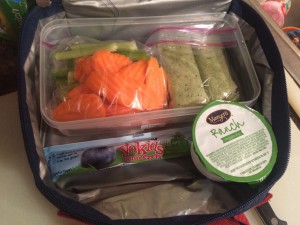
Healthy School Lunch
Packing the kids’ lunches for school means you know which nutritious foods they are eating. Here are some budget-friendly, creative ideas to keep kids happy and healthy at lunchtime.
Make a “Smarter” Sandwich:
While some kids prefer the same thing every day, others may be okay with a slight switch to their sandwich.
- Use different breads like 100% whole wheat tortilla wraps (choose wraps low in saturated and made with no hydrogenated oils) or 100% whole wheat pita pockets.
- Besides lettuce, try shredded carrots or avocado slices with a turkey sandwich.
- Buy blocks of low fat, low-sodium cheeses. You save money when you slice it yourself. Or use a cookie cutter to cut into fun shapes.
- Instead of lunchmeat, try a leftover grilled chicken sandwich with lettuce and tomato.
Love Those Leftovers:
Try using the leftovers from the family dinner for the next day’s lunch. Invest in a thermos to keep foods hot or cold until lunchtime.
- Low-sodium tomato, vegetable or bean soups
- Chili made with lean or extra lean ground turkey
- Whole wheat spaghetti with low sodium tomato sauce
- Low-sodium baked beans, bean casserole or beans & rice
Let Them Dunk:
Sometimes it is okay to let your kids play with their food, especially when they are getting extra nutrition.
- Apple and pear slices to dip into low-fat plain yogurt mixed with peanut butter.
- Carrot, celery and sweet pepper strips to dip into hummus, fresh salsa or homemade bean dip.
- Whole grain crackers (choose crackers low in sodium and saturated fat and made without hydrogenated oils) to dunk into low-sodium vegetable or tomato soup.
- Unsalted sunflower seeds, crushed whole wheat cereal and sliced banana to mix into low fat vanilla yogurt (no added sugars) to eat with a spoon like a sundae.
Get Them Involved:
While letting kids in the kitchen might mean a bigger mess, if they help pack their own lunch, they are more likely to eat it! On nights you have a bit more time, like a Sunday night, have them choose which piece of fruit or what type of whole grain bread they want and let them assemble their lunch. Make this a weekly routine – it’s another great way to spend family time together.
For more heart healthy lunch tips visit: http://www.heart.org/HEARTORG/

by Angela Hinkle | Aug 24, 2015
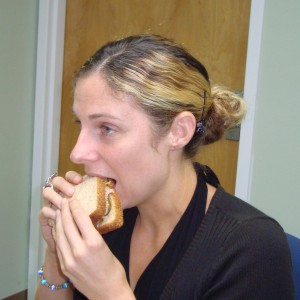
What Happens When You Eat
If you think about it, your digestive system is pretty weird. Amazing, but weird. Digestion is the rather complicated process of breaking down the food we eat into energy and nutrients, which then get absorbed into our bloodstream and distributed throughout our body so we achieve and maintain good health.
Digestion usually starts with your eyes or nose. “Mmm, that looks or smells yummy,” to which your brain and stomach respond, “Send in the good stuff, gurgle, gurgle.”
Next – take a bite. Your teeth break up the big pieces into smaller pieces. Big pieces have a hard time digesting, so chew well and enjoy the taste of your food. Saliva with digestive enzymes enters to start breaking down your food even more, making digestion much easier on your tongue, esophagus, stomach, and small intestine. Next, your tongue lifts the food (bolus) back to your esophagus so you can swallow. With more saliva and a little muscle contraction – down it goes to the stomach.
Your stomach has quite a volatile job. Strong muscle contractions have enough force to break down food further and highly acidic stomach juices are released to begin digesting proteins (amino acids) and fats (fatty acids). Once the stomach walls have churned and the juices have turned the food into a thick, juicy mass called chime, the stomach’s wavelike contractions push the food to the small intestine.
The small intestine – 20 feet of coiled contracting muscles that push food along – is where your body starts to pull out those nutrients it needs. More, but different, digestive juices come in to help shove the chime along. Here, specialized cells grab all the nutrients and energy and send them along to the rest of your body. Everything else that can’t be digested moves to the large intestine.
The large intestine, or colon, absorbs all of the water and squeezes the leftovers into clumps of waste, usually called feces, but you may have heard of a number of other terms. Finally, more muscle contractions push the feces out of your body – and digestion is finally done!
Weird but true.
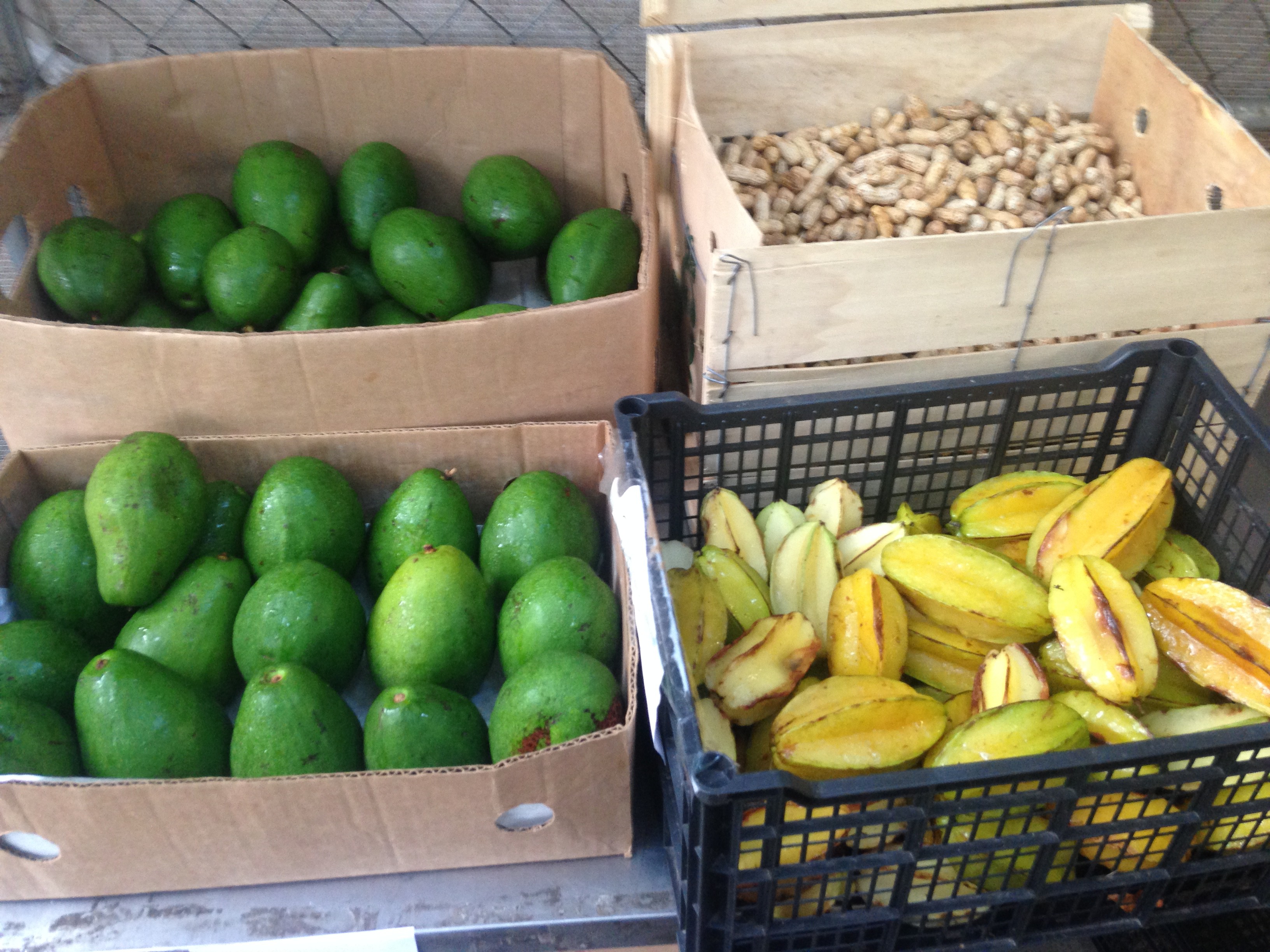
by Heidi Copeland | Aug 24, 2015
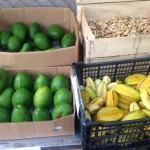 Local, seasonal food has been the subject of federal, state, and local government policy in recent years as consumer interest in and demand for this kind of food has grown. In fact, research from the UF/IFAS Center for Public Issues Education (piecenter.com/local) shows Floridians spent $8.3 billion on local food in 2012. Not only is this dollar amount continuing to grow, consumers are continuing to look for more local food options. In fact, they are interested in most anything offered and flexible about what they purchase!
Local, seasonal food has been the subject of federal, state, and local government policy in recent years as consumer interest in and demand for this kind of food has grown. In fact, research from the UF/IFAS Center for Public Issues Education (piecenter.com/local) shows Floridians spent $8.3 billion on local food in 2012. Not only is this dollar amount continuing to grow, consumers are continuing to look for more local food options. In fact, they are interested in most anything offered and flexible about what they purchase!
Still, there is no consensus about how to define “local food systems.” Is it local because of geographic distance? Or is it local because it is grown within the state? Are there exceptions when the products you want are available or are out of season? Whatever your standard definition for local food, consumers are eating it up!
Retail grocery stores, farmers markets, Community Supported Agriculture (CSAs), roadside stands, U-pick operations, and restaurants were among the most popular places the aforementioned research found consumers purchasing their local food. Additionally, consumers want this food easy to access, high in quality and not too high-priced.
Both the United States Department of Agriculture (USDA) and the Florida Department of Agriculture and Consumer Services (FDACS) support this growing movement. USDA’s National Farmers Market Directory provides consumers with convenient access to information about farmers market listings to include: market locations, directions, operating times, product offerings, accepted forms of payment, and more. (http://search.ams.usda.gov/farmersmarkets)
FDACS maintains a list of community farmers markets throughout Florida, but, because community farmers markets are not required to register with the Department, the list is not a complete one. Being listed does not imply that a market is endorsed, approved, or otherwise sanctioned by FDACS. (http://www.freshfromflorida.com/Divisions-Offices/Marketing-and-Development/Consumer-Resources/Buy-Fresh-From-Florida/Community-Farmers-Markets)
According to FDACS, Fresh From Florida produce available during the month of August includes: avocado, carambola, guava, longan, lychee, mango, mushroom, passion fruit, and peanuts.
So many opportunities exist for folks to eat healthy and seasonally. Are you getting your share? Stop by your favorite source and stock up on what’s Florida-fresh this month!
http://www.freshfromflorida.com/Divisions-Offices/Marketing-and-Development/Consumer-Resources/Buy-Fresh-From-Florida/Crops-in-Season
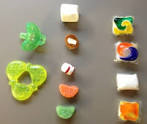
by Marie Arick | Aug 24, 2015
 Consumer Reports recently pulled their previous endorsement for laundry detergent pods in light of the potential poisoning hazard for young children. Just to be clear, this is only the laundry pods that contain the highly concentrated liquid detergent, not pods containing powdered detergent. Although these laundry pods are quickly accessed, pre-measured, use less packaging, and are just simple to use, they ultimately are not worth the lives of children. Ariana Eunjung Cha of The Washington Post recently highlighted this excerpt from Consumer Reports:
Consumer Reports recently pulled their previous endorsement for laundry detergent pods in light of the potential poisoning hazard for young children. Just to be clear, this is only the laundry pods that contain the highly concentrated liquid detergent, not pods containing powdered detergent. Although these laundry pods are quickly accessed, pre-measured, use less packaging, and are just simple to use, they ultimately are not worth the lives of children. Ariana Eunjung Cha of The Washington Post recently highlighted this excerpt from Consumer Reports:
‘When curious kids find their way into regular liquid laundry detergent, the result is often nothing worse than an upset stomach. Laundry detergent pods are presenting more serious symptoms. Along with vomiting, lethargy, and delirium, some victims have stopped breathing.’
Additionally, two children have died from ingesting a concentrated laundry detergent from a pod. Cha also noted “Last year, 11,714 reports of incidents involving kids aged 5 and younger and laundry detergent pods were reported to poison control centers nationwide. In the first six months of this year, there were more than 6,000.” This is a truly alarming fact that the numbers continue to rise. The Children’s Hospital Los Angeles posted this list on their blog:
Helpful Tips for Safety at Home
Tip 1: Cleaning materials should always be stored out of the reach of children and pets.
Tip 2: Install child-proof latches on under-sink cabinets in the kitchen and bathroom. Even if cleaning materials are no longer stored there, chemical smells may linger and could be dangerous to a child if they play under sinks.
Tip 3: Store laundry products on high shelves because many detergents can cause rashes or itching on a child’s sensitive skin.
Tip 4: Never leave a bottle or container of cleaning supplies open and unattended. Always close and put away the cleaning supplies if you are interrupted. You do not want any temptation sitting around that may harm your child.
Tip 5: When cleaning, take only the proper amount you need from the container, seal the container back up, and store the container away immediately. Use the proper equipment for handling the cleaning supply material, as recommended on the label. If the label says “Wear protective gear, gloves, or goggles,” do so to reduce harm to yourself and family.
Tip 6: When you are done cleaning, properly dispose of paper towels and rags that have come in contact with the cleaning chemicals.
Tip 7: Keep a list of emergency telephone numbers. Many cleaning products and chemicals have instructions on what to do if the product is used incorrectly, resulting in an emergency. Create and keep a first-aid kit that includes emergency-wash liquids. In the first-aid kid, keep a list of telephone numbers for:
- National Poison Control, 1-800-222-1222
- The nearest hospital
- A local ambulance service
- Your family doctor
The American Cleaning Institute urges consumers to “Pledge Now to be the KEY to a safe laundry room and routine!” Click here to take the pledge and for helpful tips for keeping your family safe.
Remember, treat all household cleaning items with care and always err on the side of caution. Look at the product you are purchasing and be aware of potential dangers. Review the warning labels and store in secured areas per label instructions. Always keep in mind: manufacturers use a product label to draw our attention to their product and this, however unintended, applies to children as well! Be diligent in keeping children safe. Personal convenience will never be more important than the life of a child.
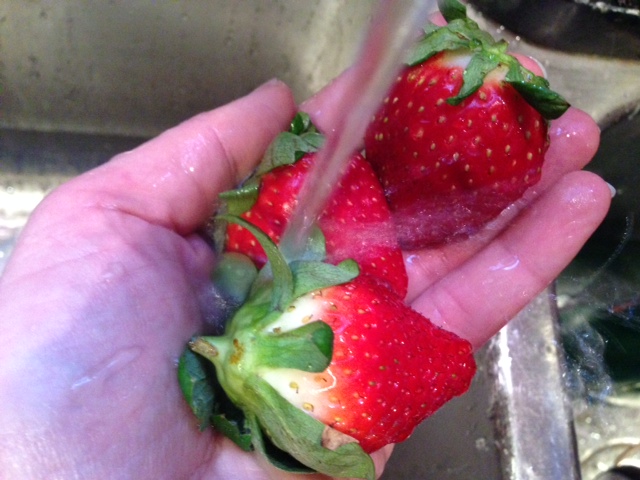
by Amy Mullins, PhD, RDN | Aug 24, 2015
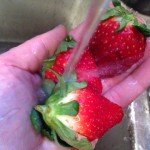 Are your kids famished when they get home from school? Kids often hit the kitchen right when they get home and begin the search for something to eat. After being at school all day, it’s inevitable they will bring a host of germs into the house (and into the kitchen). These germs, or microorganisms, can contaminate your kitchen and make your child sick if they are not kept in check.
Are your kids famished when they get home from school? Kids often hit the kitchen right when they get home and begin the search for something to eat. After being at school all day, it’s inevitable they will bring a host of germs into the house (and into the kitchen). These germs, or microorganisms, can contaminate your kitchen and make your child sick if they are not kept in check.
How can kids prepare after-school snacks in the safest way?
Establishing good habits and putting good practices in place can help keep your kids from getting a foodborne illness. The USDA recommends the following:
- Keep all items such as books, backpacks, and sporting equipment on the floor and off of kitchen counters and tables.
- Wash hands first when coming home from school, and again before making and eating a snack. Hands carry lots of germs and can easily contaminate everything they come in contact with.
- Wash fruits and vegetables under running water before eating them.
- Read more about “Food Safety After School”
What are some good after-school snacks?
Choosing easy and healthy snacks for kids can be a real challenge, especially when dealing with picky eaters. Typically, kids feel more independent when they have options and can control what they eat. Parents can set their children up for success by having a variety of healthy snack choices that are easily accessible. Find some great snacking ideas here. Keith Williams, PhD, director of the feeding clinic at the Penn State Hershey Children’s Hospital, recommends having plenty of fruits and vegetables already washed, cut up, and within easy reach of children. Keep the “sometimes” foods out of reach so you can control when your child eats them. “The goal is to make it easier to obtain the healthy snacks you want your child to eat and more difficult to obtain the foods you don’t want him to eat,” says Williams. Read more about “Breaking Your Gradeschooler’s Unhealthy Food Habit” here.
Establishing healthy habits from an early age can transition children into healthier adults. Learn more about making smart choices by visiting http://www.choosemyplate.gov/kids/
by Ginny Hinton | Jul 25, 2015

Young boy drinking a glass of milk
It may be hard to believe, but summer vacation is drawing to a close and school is right around the corner. It’s time to plan for lots of things like new classrooms and teachers, unexpected supply needs, extracurricular activity requests – and hungry kids arriving home from school.
Although it’s easy to succumb to the appeal of ready-made, processed snacks, it can be just as easy and inexpensive to offer healthy but delicious options in single-serve sizes. Following are some quick and simple suggestions:
- Store sliced veggies in the refrigerator and serve with hummus or low-fat ranch dressing.
- Mix dried fruit, unsalted nuts and popcorn in a snack-size bag for a healthful trail mix.
- Wrap sliced, low-sodium deli meats like turkey or ham around an apple wedge.
- Store hard-boiled eggs in the refrigerator for kids to grab any time.
- Purchase fresh, frozen, dried or canned fruits for easy “grab-and-go” options.
- Offer a single serving of individually wrapped string cheese or low-fat yogurt.
- Add club soda to a ½ cup of 100% fruit juice for a tasty alternative to soda.
With just a bit of advanced planning, it’s a snap to halt the snack stampede and wind up with satisfied and healthier school-age kids!
Please click here to answer a few questions to help us better serve you.








 Are your kids famished when they get home from school? Kids often hit the kitchen right when they get home and begin the search for something to eat. After being at school all day, it’s inevitable they will bring a host of germs into the house (and into the kitchen). These germs, or microorganisms, can contaminate your kitchen and make your child sick if they are not kept in check.
Are your kids famished when they get home from school? Kids often hit the kitchen right when they get home and begin the search for something to eat. After being at school all day, it’s inevitable they will bring a host of germs into the house (and into the kitchen). These germs, or microorganisms, can contaminate your kitchen and make your child sick if they are not kept in check.